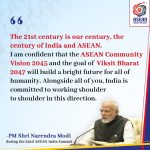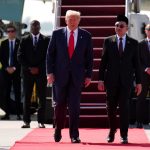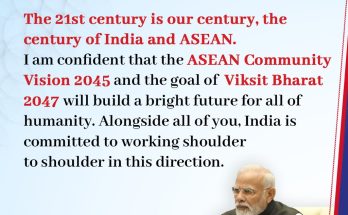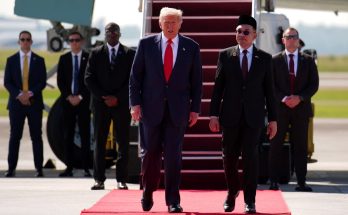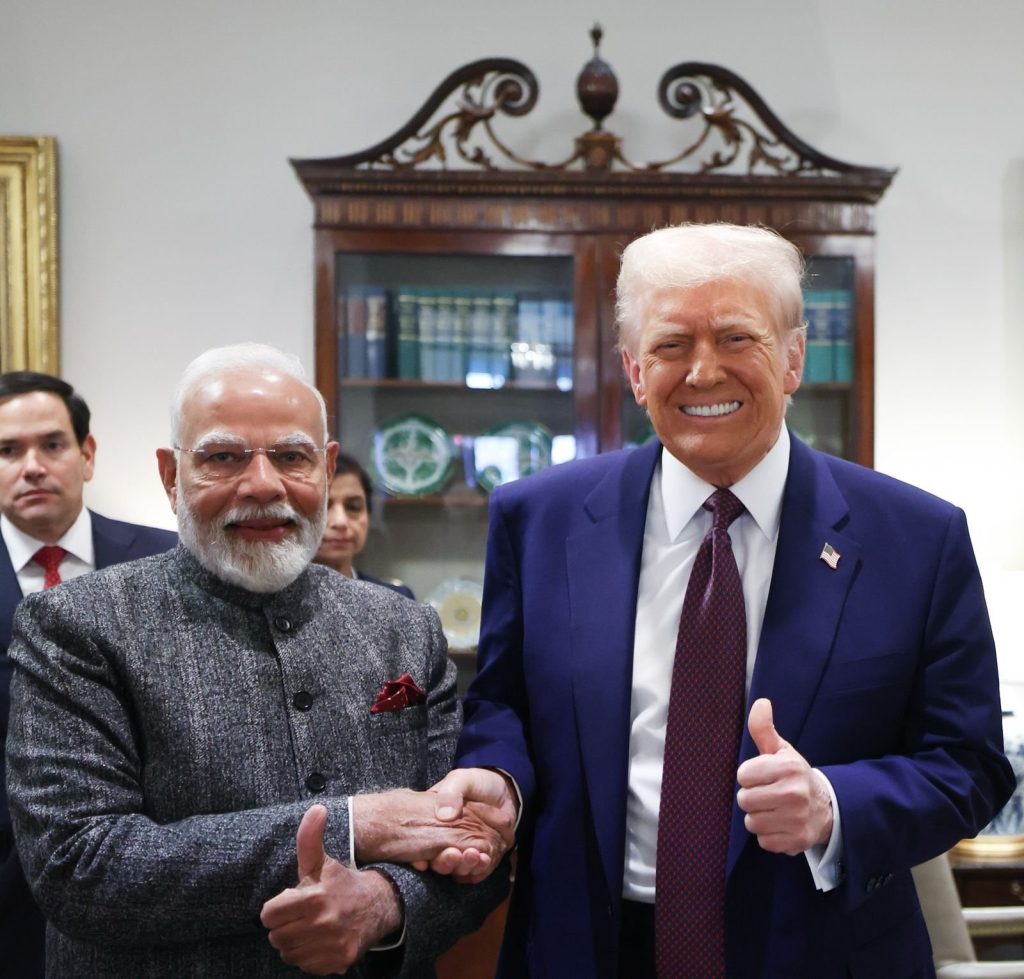
Trust, Trade, and Technology will animate the next buoyant phase of the India-US partnership, which will serve as an anchor in a rapidly mutating world order, says Manish Chand as he looks back at Prime Minister Narendra Modi’s visit to the US in February 2025, his first trip to the US in the second Trump presidency.
It’s a “New Compact” between the world’s largest democracies and G20 economies. Ushering in a 2.0 phase in the India-US strategic partnership between Trump 2.0 and Modi 3.0., the leaders of India and the US launched a “MEGA partnership for Prosperity,” uniting the strands of “Making America Great Again” (MAGA) and “Making India Great Again (MIGA) into a grand synthesis. In the freezing cold of Washington, there was much warmth, bonhomie and bonding between Prime Minister Narendra Modi and US President Donald J. Trump as they sat down for talks on February 13.
Lavishing praise on each other, the two leaders unveiled an ambitious blueprint for upscaling economic and strategic partnership between the world’s largest democracies, which will pivot around enhanced collaboration in areas of defence, energy and technologies. At the end of their talks, the two leaders agreed in unison that the three Ts – Trust, Trade, Technology – will underpin the next buoyant phase of the India-US partnership that will not only be good for the two countries, but for the entire world.
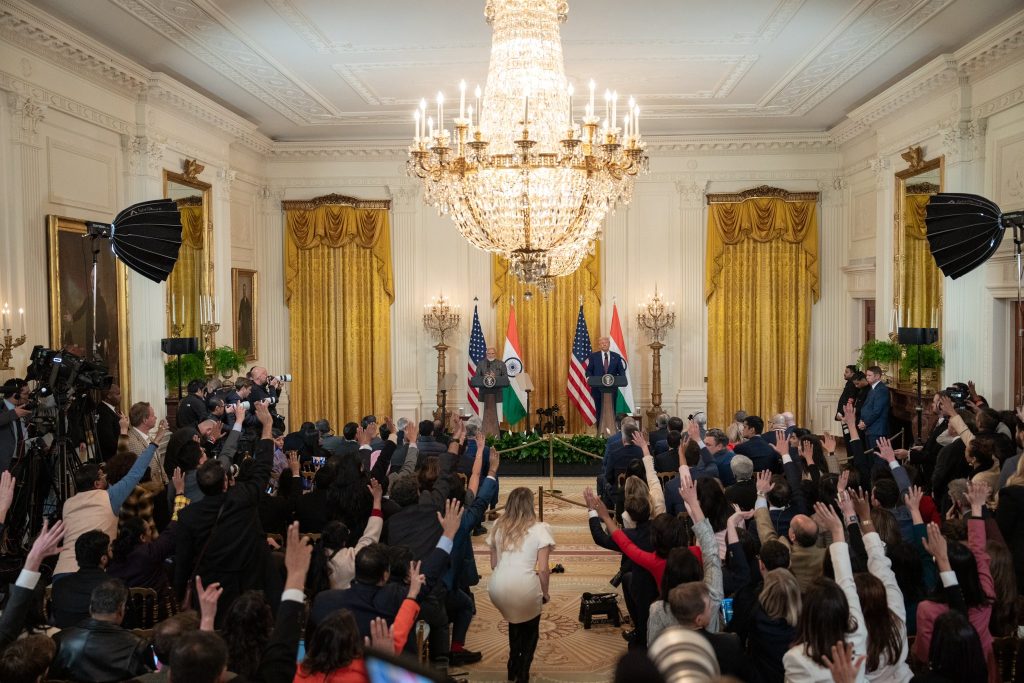
T for Trust
Of these three Ts, trust was the primum mobile, the propulsive force that will drive India-US ties across multiple domains to new frontiers. Trust animated multiple interactions between the two leaders in formal and informal settings, minimising dissonance and points of friction and opening new avenues in the crucial areas of trade, technology and defence.
The overarching outcome was an all-encompassing COMPACT: Catalyzing Opportunities for Military Partnership, Accelerated Commerce & Technology for the 21st Century. This COMPACT seeks to drive transformative change across key pillars of cooperation – defence, investment and trade, energy security, technology and innovation, multilateral cooperation, and people-to-people connection.
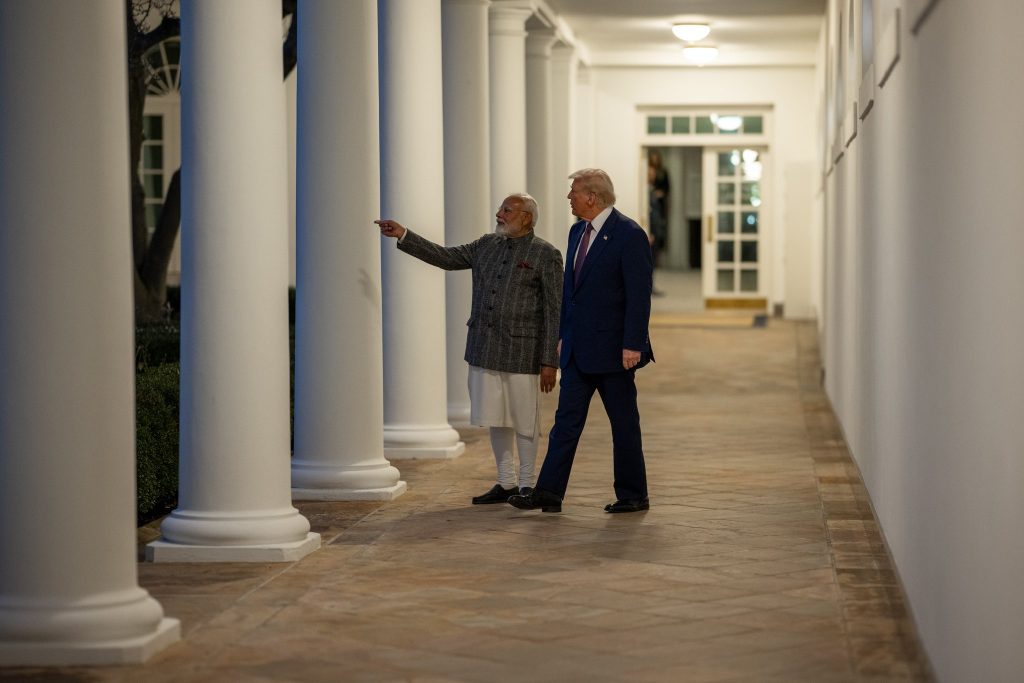
T for Trade
PM Modi coined a new mantra to encapsulate the essence of the next phase of the much-Trumpeted partnership. Looking at President Trump, PM Modi said: “The people of America are well aware of President Trump’s motto ‘MAGA – Make America Great Again. The people of India too are focusing on heritage and development as they move forward at a fast pace and with a firm resolve towards the goal of Viksit Bharat 2047.” “In the language of America, it is Make India Great Again – MIGA. When America and India work together, this MAGA plus MIGA becomes a ‘mega partnership for prosperity’ and it is this mega spirit that gives new scale and scope to our objectives,” PM Modi said.
Trump smiled at this clever concoction that reconciled seemingly contrapuntal ambitions into a harmonious whole. In transactional terms, it meant both the US and India can buy more from each other but also take care to balance their trade.
Trade and Tariff, that were touted as potential deal-breakers in the run-up to PM Modi’s visit to the US, proved to be the twin areas the two leaders can work around in their quest for shared prosperity. On the eve of the talks, Trump announced reciprocal tariffs, tarring India with the same brush, aggravating anxiety in the Indian camp. Yes, Trump talked tough on trade, literally to the face of the Indian prime minister, and spoke about the urgent need for a level playing field. As opposed to apprehensions among some sections in the business and policy community in India, Trump spoke in a restrained and measured tone about his proposal of reciprocal tariffs. He communicated clearly to PM Modi that India’s current tariff rates were exceptionally high and were not acceptable to the US and the only way forward was a level playing field. But at the same time, Trump welcomed cuts in duties on US exports announced in the budget presented by the Modi government earlier this month and expressed confidence that tariff-related differences could be reconciled through a balanced trade deal, said officials. In the end, there was no acrimony and rancour as the two leaders instructed their officials to negotiate a mutually beneficial trade deal and set a deadline for concluding it by fall. Raising the bar, the two G20 economies flagged off “Mission 500,” setting the goal of more than doubling total bilateral trade to $500 billion by 2030.
Going forward, it will take a lot of give and take, but if all goes well, the trade deal should be ready for signing by the time Trump comes to India for the Quad summit around September this year. According to experts, the new India-US FTA should include clauses not only on trade in goods, but also trade in services, investments, rules of origin, mutual recognition and dispute settlement mechanism.
T for Technology
In the realm of technology, the talks saw new initiatives and momentum, pivoted around “TRUST.” In a pioneering initiative, the two sides rebranded the Initiative on Critical and Emerging Technologies (iCET) launched during the Biden administration to US-India TRUST – “Transforming the Relationship Utilizing Strategic Technology Initiative. This will catalyze government-to-government, academia and private sector collaboration to promote application of critical and emerging technologies in areas like defence, artificial intelligence, semiconductors, quantum, biotechnology, energy and space.
The two sides also launched INDUS Innovation – a new innovation bridge modelled after the successful INDUS-X platform, that will advance US-India industry and academic partnerships and foster investments in space, energy, and other emerging technologies. The two sides launched a new partnership between the US National Science Foundation and the brand new Indian Anusandhan, (National Research Foundation) for deepening research linkages in critical and emerging technologies. In the days to come, one will see accelerated collaboration in cutting-edge technologies by launching a US-India roadmap on accelerating AI Infrastructure by the end of the year.
India-US defence partnership 2.0
There was a big breakthrough in defence tech partnership, with the US conveying its plans to provide India with state-of-the-art F-35 stealth fighter jets. The sale of F-35 to India will make New Delhi part of the elite club of countries with state-of-the-art stealth jets. The US has sold F-25 only to allies and NATO (North Atlantic Treaty Organisation) countries. France, Russia and Sweden are competing for a contract for 114 Medium Role Fighter Aircraft with India. The F-35 sale by the US to India will not go down well with Russia which has been positioning the Russian Su-57 Felon next-generation fighter as a viable alternative to F-35. Recently in India during the Aero India 2025 international airshow, both Russia and the US displayed their stealth fighter jets.
Looking ahead, the two sides decided to finalise the 10-year Defence Cooperation Framework agreement for the next decade, which will include defence inter-operability, logistics, repair and maintenance. The talks further solidified the template of joint development, joint production and transfer of technology, which will mark the next stage of the India-US defence partnership. There was also breakthrough on new procurements and co-production arrangements for “Javelin” Anti-Tank Guided Missiles and “Stryker” Infantry Combat Vehicles in India to meet India’s burgeoning defence requirements.
The two sides agreed to complete procurement for six additional P-8I Maritime Patrol aircraft, which will enhance India’s maritime surveillance reach in the Indian Ocean Region against the backdrop of China’s growing ambitions in the IOR region. Going forward, the two sides will launch negotiations later this year for a Reciprocal Defense Procurement (RDP) agreement to better align their procurement systems and enable the reciprocal supply of defense goods and services.
New Energy
As expected, the talks saw a paradigm shift from the focus on clean energy initiatives during the Biden administration to an energy partnership focused on hydrocarbons and nuclear energy. The joint statement marked a radical departure from the “clean energy transition” initiatives that found place in a joint fact sheet in 2024, following PM Modi and then President Biden’s meeting. Instead, oil and gas will lubricate energy ties between India and the US. Trump’s mantra of “drill, baby, drill” translated into “buy, baby, buy more oil from America.” “The prime minister and I also reached an important agreement on energy that will restore the United States as a leading supplier of oil and gas to India. It will be, hopefully, their number one supplier,” Trump said. India, on its part, agreed to scale up oil imports from the US to India by another $10 billion. “Last year we purchased about $15 billion in US energy output. There is a good chance that this figure will go up to as much as $25 billion in the near future,” said Vikram Mistri, India’s Foreign Secretary.
On civil nuclear energy, the talks sounded an optimistic note. Alluding to India’s announcements in the annual budget on amending its Civil Liability for Nuclear Damage Act, 2010, Trump said it would be a “groundbreaking development” for the US nuclear industry. “This will bring safe, clean and affordable electricity to millions of Indians and tens of billions of dollars to the US civilian nuclear industry and India,” he added. The two sides agreed on fructifying the landmark civil nuclear deal by addressing mutual concerns, thereby paving the way for building US-designed nuclear reactors in India, which will include large-scale localization and technology transfer. The two sides also decided to advance their cooperation in small modular reactors, which could be a game-changer in transforming the India-US nuclear energy partnership.
Grand Strategy
With China on mind, the two sides decided to deepen strategic coordination in the Quad to shape a free, open and inclusive Indo-Pacific, which will include enhancing interoperability between the militaries and navies of the four countries. To counter hegemonistic ambitions of external powers in the Indian Ocean, the two sides launched a new initiative called the Indian Ocean Strategic Venture, with Trump supporting India’s bigger role as a developmental, humanitarian assistance and net security provider in the Indian Ocean Region. In the days to come, the two sides will focus on improving Indian Ocean connectivity through construction of underwater cables.
Looking ahead, the two sides are expected to broaden the canvas of their global partnership by launching region-specific dialogues focused on the Western Indian Ocean, Middle East, and the Indo-Pacific. These dialogues will focus on enhancing sub-regional cooperation in areas of defence, technology, energy and critical minerals. Overall, what emerged from nearly four hours of talks between the two leaders and their delegations on February 13 was a grand strategy of cohering values and strengths of the world’s largest democracies to shape a balanced world order that is conducive to accelerating the resurgence of India and America. In PM Modi’s new calculus, this new elevated phase in India-US relations will combine MAGA and MIGA to form a “Mega Partnership for Prosperity.”
Author Profile

- Manish Chand is Founder and Editor-in-Chief of India Writes Network (www.indiawrites.org) and India and World, a pioneering magazine focused on international affairs. He is CEO, Centre for Global India Insights, an India-based think tank focused on global affairs.
Latest entries
 India and the WorldOctober 27, 2025Modi hails the century of India and ASEAN, backs ASEAN centrality
India and the WorldOctober 27, 2025Modi hails the century of India and ASEAN, backs ASEAN centrality India and the WorldOctober 26, 2025Act East: Five reasons why ASEAN summit in Malaysia matters
India and the WorldOctober 26, 2025Act East: Five reasons why ASEAN summit in Malaysia matters India and the WorldOctober 25, 2025Malaysia Summit: India can play a bigger role in ASEAN: Anil Wadhwa
India and the WorldOctober 25, 2025Malaysia Summit: India can play a bigger role in ASEAN: Anil Wadhwa India and the WorldOctober 2, 2025With US frowning, India to host Putin in December
India and the WorldOctober 2, 2025With US frowning, India to host Putin in December

